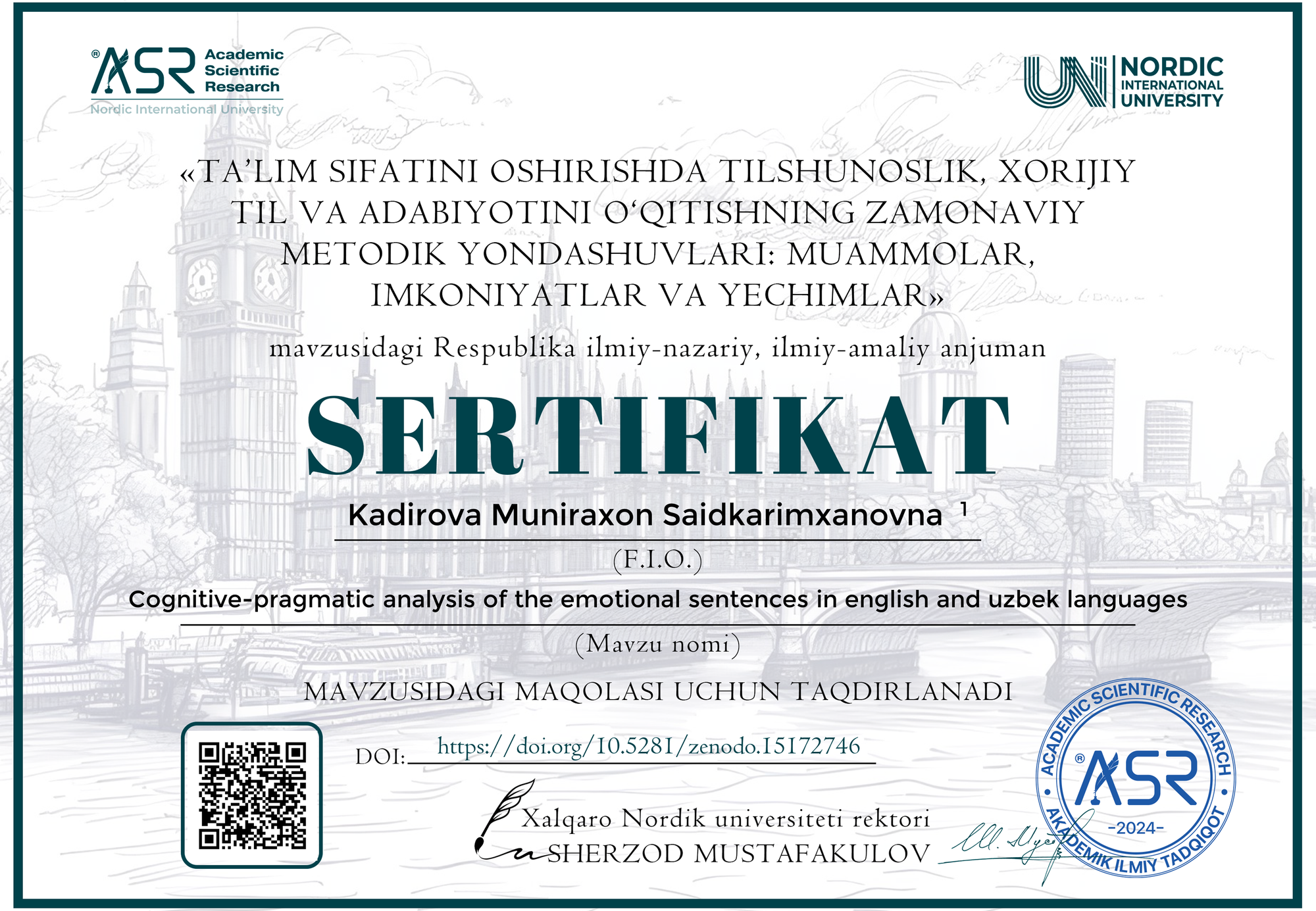Kadirova Muniraxon Saidkarimxanovna 1

DOI: https://doi.org/10.5281/zenodo.15172746
Zenodo community: https://zenodo.org/records/15172746
Nordic_press journal: https://research.nordicuniversity.org/index.php/nordic/article/view/2243
MAQOLANI YUKLAB OLISH
SERTIFIKATNI YUKLAB OLISH
REVIEW:
This paper provides an insightful examination of emotional expressions within English and Uzbek, analyzed through cognitive and pragmatic lenses. The study is timely and relevant, given the increasing interest in cross-cultural communication, linguistic expression of emotions, and cognitive linguistics.
The strengths of this work include a well-defined comparative framework that effectively highlights both the universality and cultural specificity of emotional language. The author successfully integrates cognitive theories, particularly metaphorical conceptualization, alongside pragmatic aspects such as context, speaker intention, and cultural norms. Examples provided, such as metaphors and culturally embedded expressions from both languages, significantly strengthen the analysis and enhance reader understanding.
The literature review is comprehensive, drawing upon significant theories from Ekman, Lakoff, Kövecses, Grice, and Wierzbicka, offering a solid theoretical foundation. Methodologically, the selection of corpora from diverse sources such as literature, film, and conversational speech ensures robustness and reliability of the findings.
For improvement, the paper could benefit from further elaboration of specific methodological details, such as explicit criteria for corpus selection and analysis procedures. Additionally, incorporating more empirical data or statistical validation could further enhance the study's academic rigor.
Overall, the paper makes a valuable contribution to the fields of cognitive linguistics and cross-cultural pragmatics. It is recommended for publication with minor revisions addressing the aforementioned points.



